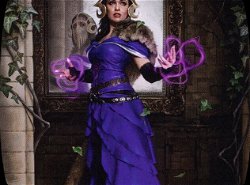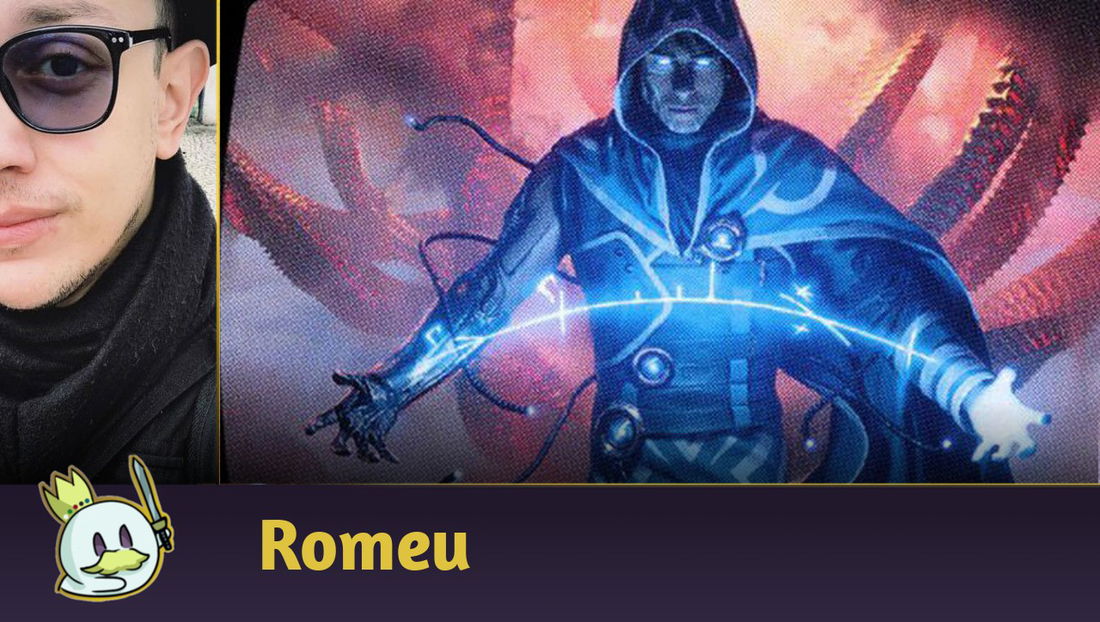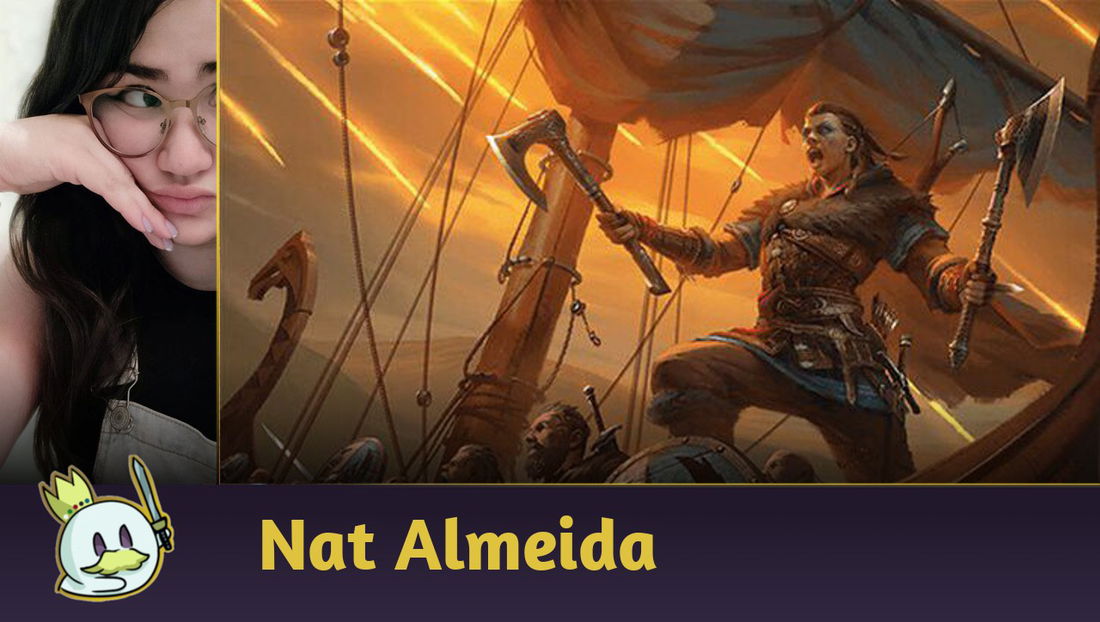When Greasefang, Okiba Boss was released, several lists were brewer to find out the optimal shell for the between the Rat and Parhelion II.
We had the Esper line, abusing Raffine, Scheming Seer's connives and efficient counterspells like Stubborn Denial. The Mardu version was able to switch between full combo and traditional "BR Midrange", using Bloodtithe Harvester and Fable of the Mirror-Breaker. Finally, we had Abzan lists with Esika's Chariot and Traverse the Ulvenwald as consistent pieces to the combo engine.
Over time, the Abzan version gained more and more metagame share, so it was determined that green would be the definitive complementary color for the combo. But recently, with the release of Duskmourn and its various cards with the Delirium ability, the Mardu version has shown some subtle changes to its list that propelled good results in recent weeks.
Today, let's try to answer this: Is Mardu Greasefang a good choice, or is it just a fad of the month deck?
Introduction to Greasefang
Before we compare them, let's explain a little about the core of the Biker Rat deck and how it works.

The main interaction within the deck consists of discarding the colossal vehicle Parhelion II, and then bringing it back to the field with the ability of Greasefang, Okiba Boss, which, by the way, can also crew the angelic ship - guaranteeing, in addition to an attack from a flying 5/5, a board with two 4/4 angels with flying and vigilance, giving you a significant board presence which, depending on the game state, can make it impossible for the opponent to win.
Like most combos in the format, Greasefang works on two fronts. Generally it will be an interactive deck with removals and good individual value cards in order to be able to win without the combo, but it will also have pieces that speed up the process of both finding the key creature and putting the vehicle in the graveyard, making it possible to not only "combo out" quickly in the early game, but also threaten this interaction throughout the match.
Thus, we can conclude that all version of the deck will work within these four angles: combo pieces, disruptive interactions, cards to search or accelerate the interactions and high-value or impactful cards. Each version will normally focus on a different angle,
depending on which cards they bring to the deck.
The Esper variant isn't the main focus of today's comparison, but it deserves an honorable mention. Among all colors, overall, Esper Greasefang was the most reactive version of the deck, with gameplay similar to a control list with the combo as a win condition. Furthermore, the heavy connive lists, using Ledger Shredder and Raffine, Scheming Seer became somewhat popular in the past.
In my opinion, however, the best advantage of using Esper is having access to Stubborn Denial: a cheap, versatile counterspell that protects you in most scenarios. That said, the Esper list has always underperformed, mainly because it is slower in both its gameplan and differente lines of play.
Abzan Greasefang
Starting with the "home team", Abzan Greasefang is the most balanced deck precisely because of what green has to offer. When we think about combos, tutor is the first support that comes to mind, and in this case, we have Traverse the Ulvenwald to help us be redundant with our combo pieces.
Achieving delirium with this deck is a very easy task, partly because it is a deck that uses and feeds the graveyard a lot, partly because it has a wide range of card types.

But of course, when we think about this version, Esika's Chariot is the first thing that comes to mind. The aptly nicknamed cat wagon is like a "Mini Parhelion", with an advantage for its versatility. Obviously reanimating the big ship that creates two angels per turn is an awesome turn-three play, but it's not like reanimating and attacking with the wagon, creating three 2/2 tokens in the process is so far behind.
Besides the fact that the chariot can be revived on turn three and cast normally on turn four, just by casting it on curve can be already enough to overwhelm the opponent. Its versatility makes it work well in the combo, serving as a second payoff, but also as an individual threat, being a straightforward card that constantly grows your board.
Mardu Greasefang
Mardu Greasefang has always been "there". Especially in the beginning when the strategy's deckbuilding wasn't as refined, it's safe to assume that it was easier to build on Mardu colors. With some powerful cards like Fable of the Mirror-Breaker and Bloodtithe Harvester, it was simpler to visualize the deck, especially since these cards, in addition to being generically good ones, are useful for digging to find the Rat (and using it to revive something important).

That said, our "Ace" here is Fear of Missing Out. The new card from Duskmourn fits perfectly into Greasefang's strategy, which makes it really sad that it's so hard to play it alongside Traverse the Ulvenwald. Its Enter-the-Battlefield effect is already very similar to another card - Raffine's Informant, a creature that's played both on the Abzan and Mardu lists, since it's a useful body that also throws vehicles in the graveyard. Analyzing just this ability, draw before discard is better since it gives you more information to choose the right card to discard.
However, what makes the Nightmare so good is its delirium, as all of the deck's payoffs involve combat: Parhelion II attacking twice is somewhat of an overkill, and Skysovereign, Consul Flagship causing 3 more points of damage or even Overlord of the Balemurk, a new card that is performing quite well in both versions, can put you so much ahead that it'll certainly define the game's outcome.
In conclusion, Fear of Missing Out slots exactly where the deck wants it, acting as both an enabler and a finisher.
Comparison
Ok, we know that the new card is very strong, but we need to analyze whether it is enough to be the best option for the current meta. From this perspective, the card doesn't change much the flow of the deck - it will still lose access to tutors and “dig” less than the green version, which is not only faster in finding its pieces, but can also match the individual value and advantage of its pieces, since Esika's Chariot is so valuable.
Still, that's not to say that the Mardu version doesn't work - it's very consistent and, in a more attrition-based meta, with aggressive and midrange decks, the red version fares better with its micro-interactions and advantages, combined with a constant combo threat. It just turns out that, in a meta where Azorius Control is on the rise, options that allow you to combo out earlier, giving the opponent less chance to react, end up being more productive.
If we consider a field of decks aimed at quick wins, or even decks that win by grindind, like Rakdos Midrange, the Mardu version will perform a little better.
Conclusion
In the end, it can be concluded that both lists are effective, with the expected metagame being the decisive factor to determine which version will be better positioned. Today, with Azorius Control and Enigmatic Incarnation high play-rate, Abzan seems to have better matches against these decks, while having balanced matches against others. But since the meta is fluid and constantly changes, it's important to keep in mind the list with Fear of Missing Out!
That's it for today. See you next time!















— Comments 0
, Reactions 1
Be the first to comment